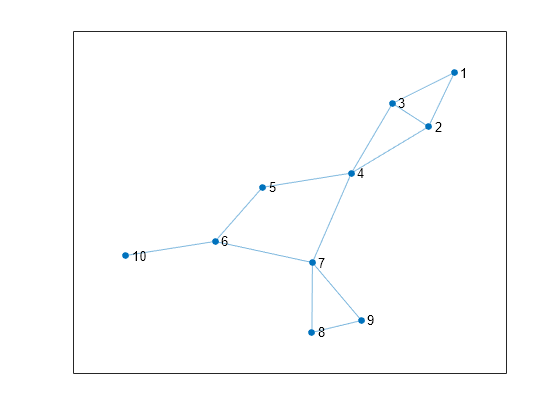biconncomp
Biconnected graph components
Description
bins = biconncomp(G)G as bins. The bin numbers indicate which biconnected
component each edge in the graph belongs to. Each edge in G
belongs to a single biconnected component, whereas the nodes in G
can belong to more than one biconnected component. Two nodes belong to the same
biconnected component if removing any one node from the graph does not disconnect
them.
[
additionally returns the node indices bins,iC]
= biconncomp(___)iC indicating which nodes
are cut vertices (also
called articulation points).
Examples
Input Arguments
Output Arguments
More About
Extended Capabilities
Version History
Introduced in R2016b

